Best of India Tours
- Golden Triangle Tour- Best of India & Nepal
- Classical Rajasthan
India Cultural Tours
- Images of North India- Karnataka Heritage
- Rajasthan & Goa Tour
Discover India Tours
- Grand India Tour- North to South India
- Central to South India
Rajasthan Tours
- Classical Rajasthan Tour- Golden Triangle Tour
- Grand Mughal Tour
India Luxury Trains
- Palace on Wheels- The Golden Chariot
- India Deccan Odyssey
- The Indian Maharaja
- Royal Rajasthan on Wheels
Nepal Tours
- Glimpses of Nepal- Buddhist Pilgrimage
- Nepal River Rafting
- Destinations of Nepal
- Nepal General Info
India Wildlife Tours
- North India Wild Life- South India Wildlife
Tibet Tours
- Tibet Monastery Tours- Explore Tibet
- Destinations of Tibet
Spa & Yoga Tours
- Ananda in Himalayas- Yoga & Meditation
Adventure Tours
- Manali Safari Tour- Himalayan Trekking
- Horse Safari
Gwalior
Bandhavgarh
![]() Bhopal
Bhopal
![]() Gwalior
Gwalior
![]() Indore
Indore
![]() Jabalpur
Jabalpur
![]() Kanha
Kanha
![]() Khajuraho
Khajuraho
![]() Mandu
Mandu
![]() Orchha
Orchha
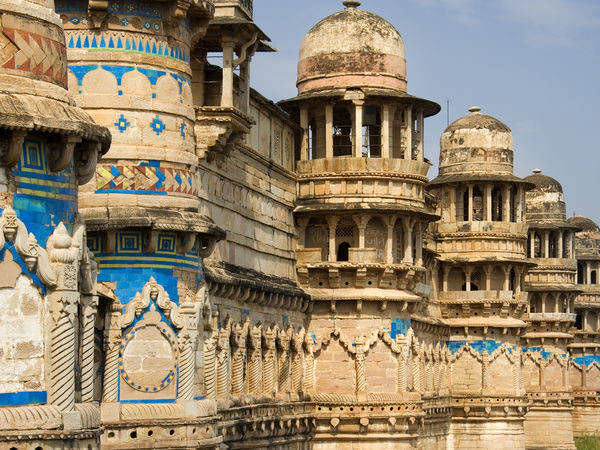
With its stimulating ambience and undeniable aura of romance, Gwalior is one of the most impressive cities in India for the sensitive holidaymakers. There is an interesting story of how the city derived its name. According to legends, Suraj Sen, a prince of the Kachhwaha clan of the 8th century, lost his way while venturing in the jungle and reached an isolated hill wandering around. There he met a venerable old man, Sage Gwalipa. Thirsty and tired, he asked for some water and the sage led him to a pond. To his astonishment, the prince after drinking the water found that not only his thirst but his disease of leprosy has also been cured.
He asked the sage if he could do anything in return and the sage told him to fortify the hill. The hill was fortified and named Gwalior, and the city that developed around it gradually acquired the name. Gwalior Gwalior was always an important city because of its strategic location on the Agra-Deccan main route. Hence many dynasties tried to claim this land including the mighty Mughals and Marathas. Before them, the city was the stronghold of the Huns from Central Asia, the Kachhwaha Rajputs, the Pratihars, the Slave Dynasty of Delhi Sultanate, and the Tomars—of whom the most important king was Raja Man Singh (1486-1517). The Marathas under Madho Rao Scindia, the last dynasty to rule the city before Independence, restored Gwalior to its former glory. The imposing Jai Vilas Palace, situated below the hilltop Gwalior fort, is proof of the Scindia sway over the city.
Sightseeing
The city of Gwalior has many monuments that were built by the erstwhile Tomar and Scindia rulers. The majestic Gwalior fort is one of the largest forts in India. There are various chattris or cenotaphs commemorating the Scindia rulers who ruled the region till India’s independence. The Man Mandir Palace and the Gujari Mahal are two other interesting sights in Gwalior. The Sas-Bahu Temples are 11th-century temples of Lord Vishnu while Teli-ka-Mandir is a 300-metre-high Vishnu temple of the 9th century. Some other important attractions of Gwalior are Suraj Kund, Tansen Memorial, the tomb of Mohammad Ghaus, Kala Vithika, Surya Mandir, and Scindia Museum
Excursions
While in Gwalior take some time off to visit the nearby places that, besides being captivating in themselves, also speak a lot about the region’s rich history. Datia (74 km) is famous for its Bundela palaces and paintings. Another place is Pawaya, which was known as Padmavati in ancient times. Archaeological remains of the first and eight centuries have been discovered here. The Dhoomeshwar Mahadeo temple, situated 3 km away, is a fine example of Bundela architecture. Sonagiri, Orchha, Shivpuri, Chanderi, and Tigra Dam are some other places in the vicinity of Gwalior.
Excursions for Gwalior
Gwalior Fort
The foundation of the Gwalior Fort was laid by Raja Suraj Sen on the advise of Sage Gwalipa some 1,000 years ago on a hill where he was supposedly cured of his leprosy. The Gwalior Fort occupies the whole of the enormous rock it sits on. Some estimates claim that it is the largest structure of its kind in the world. The outer wall of the fort stands 3.2 km (2 miles) in length and 35 m in height. A steep road winds upwards to the fort. On both sides of the road, cut deep into the rock and towering over the proceedings, are scores of Jain statues. Some of these are two or three storeys high and carved, in some cases, more than 2 m into the rock surface.
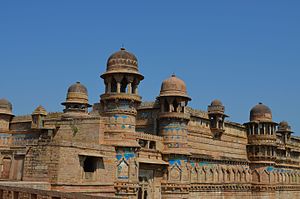
Gujari Mahal & Archaeological Museum
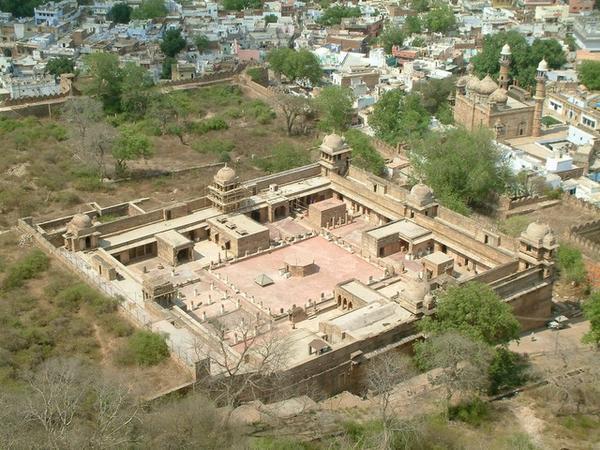
If Man Mandir reflects Man Singh/’s aesthetic sensibilities, Gujari Mahal speaks of his love for his ninth Gujar wife, Mrignayni, for whom he built a special palace outside the fort. It is now a museum and houses a very extensive collection of stone carvings, many of them rare and exquisite. The courage and beauty of Mrignayni and her love with Raja Man Singh are now a part of popular folk tradition.
Man Mandir Palace
Lest the unwary might sometimes suppose, the Man Mandir is not a temple but a palace. It is the fort/’s piece de resistance. The palace built by Man Singh Tomar between 1486 and 1516 is a delicate structure exhibiting a sense of joy and abandon through use of colour, motif, and design. This palace is also known as the Chitra Mandir or the Palace of Paintings because of the tiled and painted decorations of peacocks and other birds. There are chambers for affairs of state as well as those for relaxation, adorned appropriately and ornately with carved animals, flowers, and the human form.
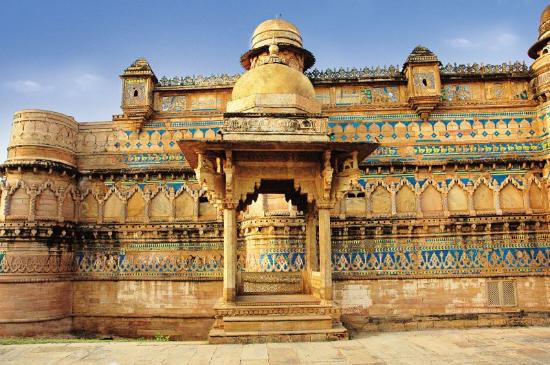
Sas-Bahu Temples
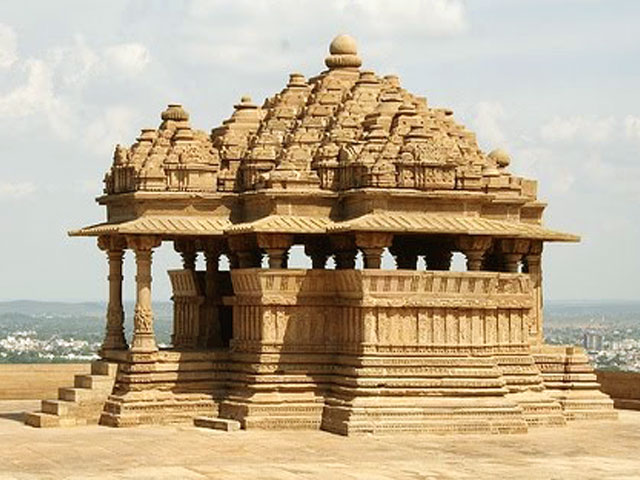
The Sas-Bahu temples, in another part of the fort, are not dedicated to a mother-in-law (Sas) and daughter-in-law (Bahu) as is sometimes supposed. Sas-Bahu is the name traditionally given to two adjoining temples of different sizes. The larger of the two is profusely sculpted with graceful figures and intricate patterns. This is apparent in the interior where, above the sculpted walls and pillars, an elaborately carved lotus adorns the roof.
Suraj Kund
Built in the 15th century, references to the Suraj Kund complex can be traced as far back as AD 425. Suraj Kund existed much before the city of Gwalior and is considered the place where Sage Gwalipa cured Suraj Sen of leprosy from the waters of this pond.
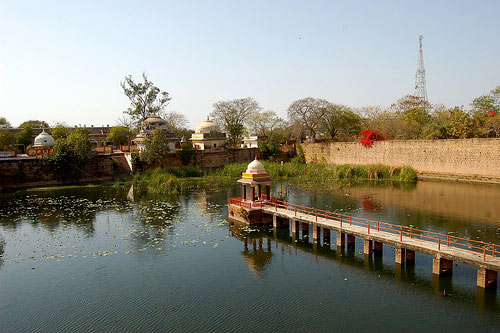
Memorial Of Tansen
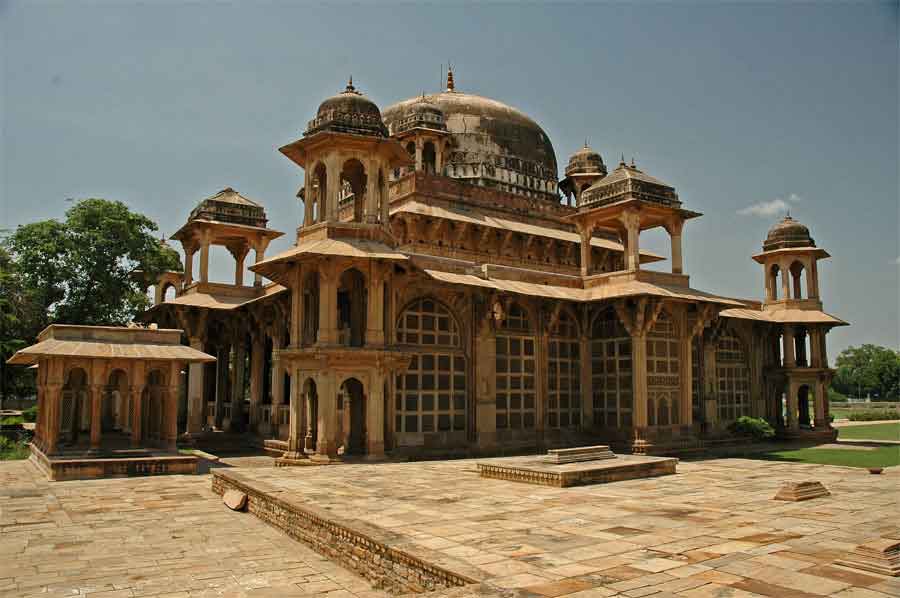
Adjacent to the tomb of Ghaus is another small white, austere tomb. This is the memorial dedicated to Tansen, a famed musician, and one of the nine gems of Akbar/’s court. At this place is held the annual Tansen Sangeet Samaroh, a world-renowned music festival, which brings forth the essence of Gwalior and its rich heritage of classical music.
Tomb Of Mohammad Ghaus
At another point in the city is the tomb of Mohammad Ghaus, a saint of the Islamic faith of the 16th century. Although of little importance from a historical perspective, the sheer beauty of the tomb is breathtaking. The stone carving for which the skilled artisans of Gwalior were justly famous is apparent in the huge panels of lacy screen work, which combine with an interesting architectural design to create a delicate, ethereal appeal.
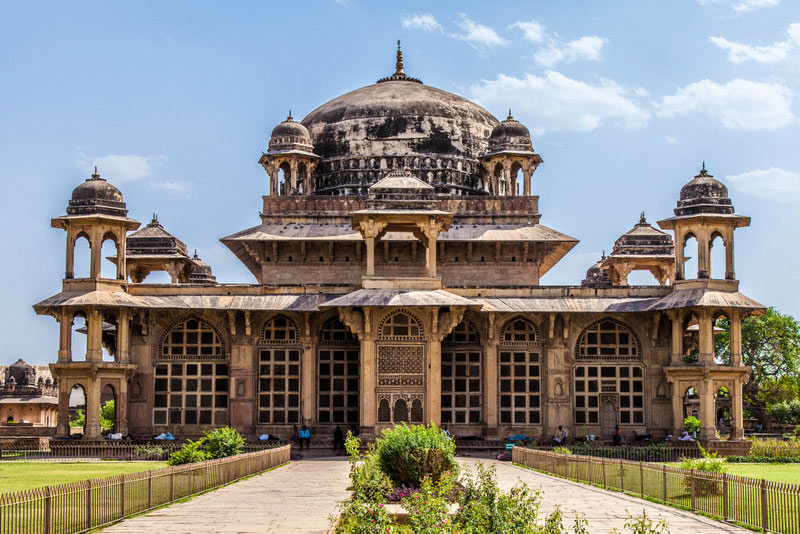
Teli-Ka-Mandir
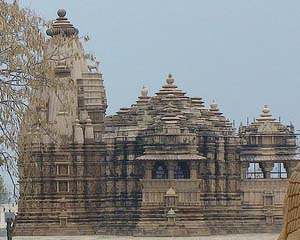
Contrasting with the predominant North Indian style of architecture is the Teli-ka-Mandir. This temple, built in the ninth century and Dravidian in form, is believed to be the oldest in the fort. The sculptures are distinctly North Indian. Some believe it was so named because it was built in the Telengana style; others say this was because it was built by telis (oil merchants). A more recent study ascribes it to Telap Raj, a prime minister of the region. Dedicated to Lord Vishnu, a garuda (mythical bird) can be seen on top of the 10-metre-high doorway .
Surya Mandir
Another important tourist attraction of the city is the Surya Mandir (Sun Temple), a replica of the famed Sun Temple at Konark in Orissa. The temple was built by G. D. Birla, the famous industrialist of India.
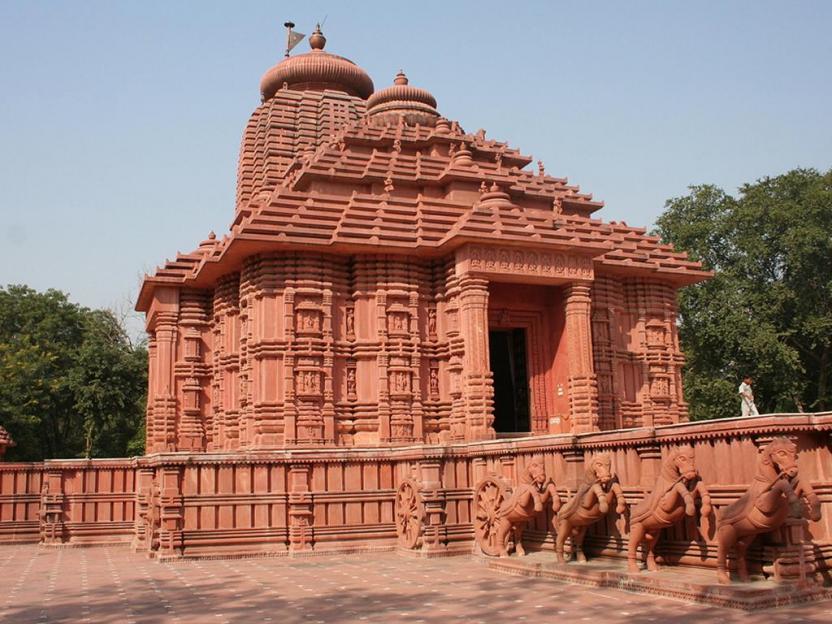
Scindia Museum
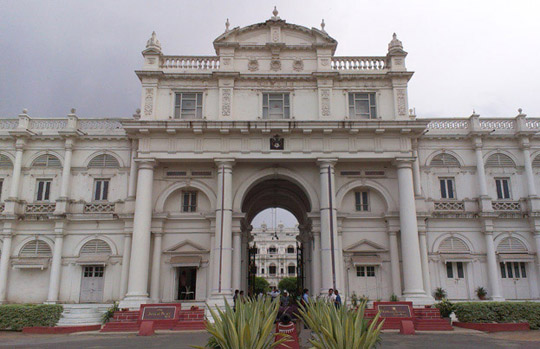
Much of modern Gwalior is associated with the Scindias who were prolific builders. The Jai Vilas Palace at Lashkar is an opulent Italianate structure, set in carefully laid lawns. Part of the palace functions as residence of the royal family while the other has been converted into a museum that effectively documents a more leisurely and princely lifestyle. The museum exhibits, consisting of collections of the Scindia family, include such things as chandeliers weighing several tons, a silver toy train whose wagons were used as serving dishes, and a glass cradle from Italy used for the Lord Krishna at Janmashtami.
Kala Vithika
Situated near the Gwalior Railway Station in the heart of the city, Kala Vithika is a good place to venture into if you want some information on the history and culture of Gwalior. The museum is open on all days except Sundays and holidays.
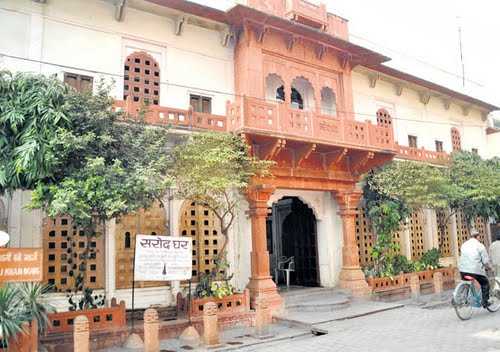
Fact File
 Area: 289.85 sq km
Area: 289.85 sq km
 Population: 8,30,720
Population: 8,30,720
 Altitude: 212 metres above sea level
Altitude: 212 metres above sea level
 Best Time to Visit:October-March
Best Time to Visit:October-March
 Languages:Hindi and English
Languages:Hindi and English
 STD Code: 0751
STD Code: 0751




